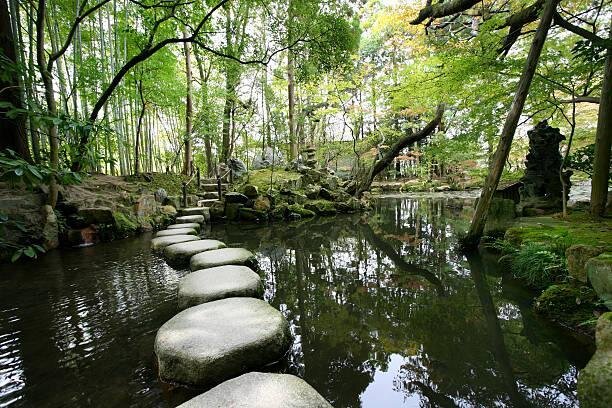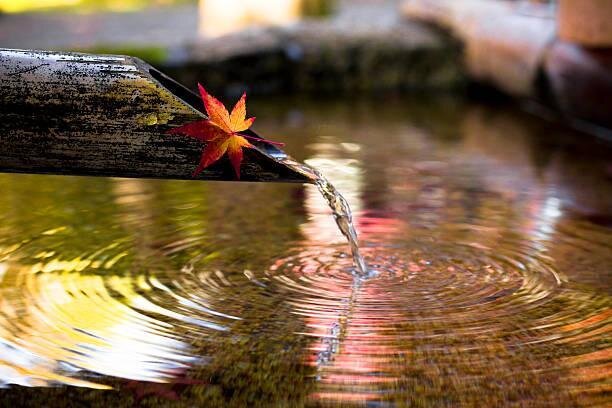8 Easy Ways to Create Stunning Japanese Gardens in Your Backyard
There must have been many times when you would have thought to yourself about doing something to brighten up your backyard. We know, we've all been there!
One of the first ideas that may have popped in your head was to spruce it up by turning it into a garden.
So, you start looking into the types of gardens you can incorporate, and then you come across Japanese gardens. Sophisticated and serene, you fall in love with them!
However, at the same time, they can be a little intimidating as well. How can you make Japanese garden designs? Where will you get Japanese garden plants? How will you get your hands on all these little pebbles?
These questions will most likely run through your head and make you want to skip on to the next idea.
Before you give in to these thoughts and give up just because you think it's a little too challenging to do, let us stop you and tell you that there are straightforward steps to create Japanese gardens.
Read on to learn about the eight easy ways you can turn your backyard into your very own Japanese style Garden!
Why Japanese Gardens?
The Japanese are known for their traditions and how they've incorporated intricate design features into their living and recreational spaces.
These spaces do not only evoke calming sensations and feelings of 'Zen' but incorporate the natural landscapes as well.
Japanese use simple organization and clean lines to create a space where one could achieve inner peace.
The great news is that Japanese garden designs can also become your spiritual haven, giving you pocket spaces to unwind and relax.
How to make your spiritual getaway?
There are many Japanese garden design ideas that you can use. These ideas are not only easy to recreate but will not put too much pressure on your budget!
Now, let us look at the 8 ways to create a Japanese garden:
1. Less is more
You don't have to fill up every corner of your garden, as that will just make it feel cluttered and claustrophobic. Too many things can be distracting, and that is NOT what you want your garden to do.
'Ma' or open spaces are integral parts of Japanese garden designs, and by leaving unoccupied parts, you are helping to enhance the individual elements present there, like a particular plant or a boulder arrangement.
2. Hard landscaping your way through
You can use natural hardscaping like gravel, pebbles, or steppingstones to pave ways in your green pocket. These paths make you feel like you're a part of the whole process and help evoke your senses.
Make sure that you use varying elements, like steppingstones of different sizes or curving paths with varying widths. With such additions, you can control how someone will use the space and where they will stop to view a particular element.
You can look anywhere for these, be it in parks or forests or perhaps a beach. Make sure you get the right size and shape!
3. Monochromatic Pallet
It can be very tempting to add a dash of bright colors like overhanging red flowers or brightly painted wooden bridges over a water feature.
However, if you want an authentic Japanese style garden, you need to stick to the basics. Usually, a green palette is chosen as the base for such an approach.
4. Flowers are your best friends
Add flowers to your garden as they will enhance the green elements. Make sure that they are not too bright, or they will stand out too much!
Remember, all the elements need to work together cohesively to enhance the space collectively.
For this Japanese garden design idea, you can use bonsai trees, maple trees, or a Japanese favorite, Wisteria, to adorn your garden.
5. Frame your views
If you are lucky enough to live in a naturally beautiful landscape and your backyard overlooks it, then frame those views.
These will become moments of pause and contemplation, and you can use wooden frames to highlight these views that can also be crafted easily with bamboo stalks.
6. Ripples of sand
Another Japanese garden idea on a budget is incorporating gravel or sand.
These are components that will remind you of natural landscapes. Sand around specific elements like boulders or particular highlighted plants will add a relaxing and calming effect.
You can create lines in the sand or white quarts gravel with a rake or a stick to create ripple-like effects, and this rhythmic effect will do wonders for your garden and your mind!
7. Gated thresholds
If you haven't seen Japanese architecture, then look it up and add the Japanese style gates. The purpose of these is to enhance the entry into these spaces and not make them feel exclusive.
The gates will also make your space look much more significant and add a certain feeling of openness to your backyard.
8. Water features
Water has a soothing effect, and this effect can be psychological, visual, and sensual. Like many other cultures and practices, water features like a small artificial waterfall or a small stream of water gushing from a bamboo stalk can add to the space's purity.
You can make small basins of water or buy artificial waterfalls to touch up your garden. These are pretty easily available in the market. So, don't worry about their availability, and get that wooden basin right now!
Conclusion
The first step can always seem very daunting, but you can easily do it with a bit of effort. So, try out these affordable and straightforward steps and make your garden the best part of your house!
For more fascinating ideas about gardening and landscape architecture, make sure to check out modern landscape architecture and garden design in california as they provide garden design, landscape architecture, urban design, and regional landscape design services.
If you are lucky to be in San Diego, then get in touch with landscape architect California. for garden design services right away.
Happy Gardening!





